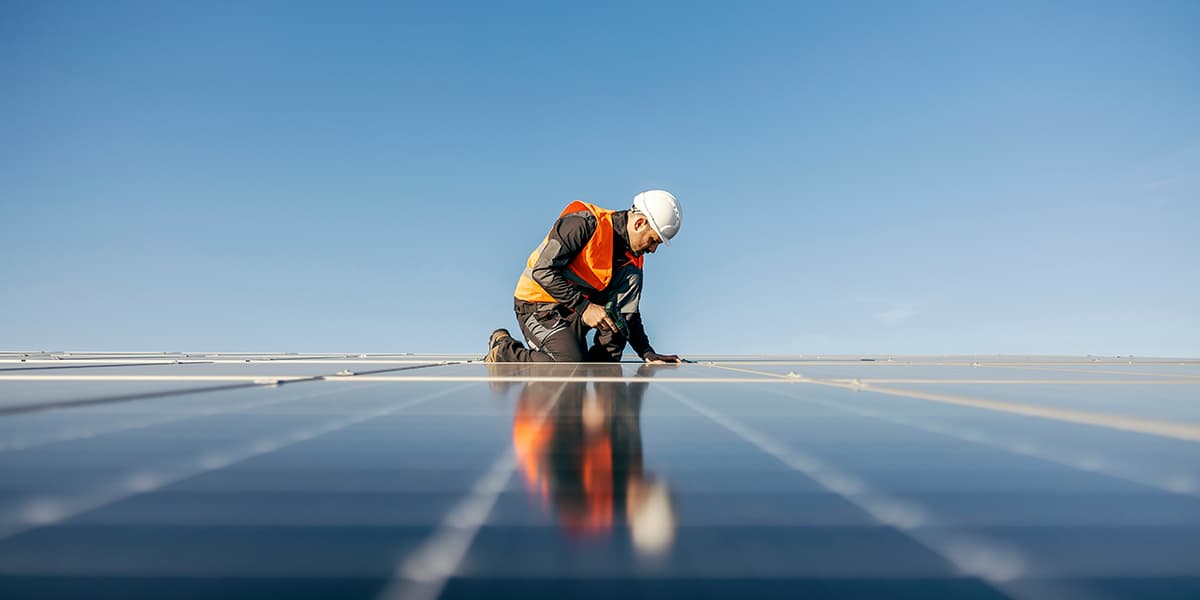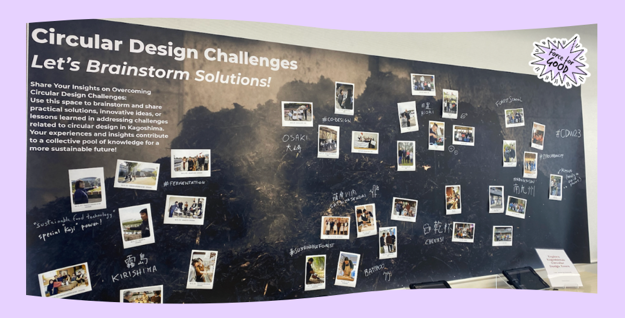While on maternity leave in 2023, I spent three months living in Japan. During my time there, I had the opportunity to learn about circular design in the Asia-Pacific Economic Cooperation (APEC) region, including how different practitioners and residents are adopting sustainability and making positive human and environmental impact through their work.
In December, Re:public – a Japanese self-described ‘think-do-tank’ working across government, industry and academia – hosted five days of tours and workshops across Kyushu, followed by a two-day circular design conference in Kagoshima, Japan. The latter is where I managed to sneak away from my firstborn for the first time, for a weekend of energising exchanges.
It was a chance to learn from exciting social entrepreneurs in the region, and from circular design leaders across Japan, Taiwan, Thailand, and Australia.
Before sharing my experiences of the conference, let’s define net zero and circular design. Taiwanese panellist, Aining Ouyang, CEO at REnato Lab, shared the Ellen MacArthur Foundation findings that we can only deal with 55% of global greenhouse gas emissions by improving energy efficiency and using renewable energy sources. To address the remaining 45% and attain net zero, we must completely transform how we produce and use products through a circular economy. Circular strategies require us to consider product life cycles, modular design, smarter sourcing and manufacturing, product life extension, value recovery from recycling/up-cycling, and shifting from products to services through shared platforms for example.
Dan Hill, the current Director at the Melbourne School of Design, led the conference with an opening keynote to anchor our conference exchanges. I’m borrowing from a few of his “patterns for hope’”, as he called them, to highlight some of my takeaways from the conference.
Creating little local loops with global impact
A deep dive into one region, Kagoshima, a prefecture in Japan, – confirmed that impact won’t come if we’re waiting for a silver-bullet, or from top-down directives or national policies alone. Success comes from resident-centred, living-system-conscious collaboration and local agency for those in the most ‘remote’ places to re-invent and prove the models that work for them. An example of this action working is Swaffham Prior – the heat pump village in the UK.
These local pioneers are often mired with financial, technical or socio-political challenges, and ultimately end up learning a lot, which others can borrow from and replicate more seamlessly. We’re also in a position to develop the partnerships, tech, and capabilities to weave systems and flows together in these loops – allowing for a wider global footprint.
On this idea of wider impact, my colleagues Zung Nguyen and Harriet Pugh address the disconnect between centrally made policies, and what they look like locally in practice. Luckily, TPXimpact teams support both central and local government work, allowing us to understand stakeholder and community challenges on both ends. This first pattern for hope leaves me optimistic that this understanding and our practical planet-centric design methodology can be leveraged by our clients to accelerate the UK’s net zero aspirations.
Panellist Kasumi Fujita spoke proudly of the circular village being developed in Osaki town. This ‘village’ is a model city programme for interested parties around the world to send employees to, so they can observe and experience the town’s waste management pilot study firsthand. And if their model towards circularity currently intervenes at the consumption and waste sorting level, they are now also working with new academic and private partners (for example, a large diaper company) to address the problems with upstream businesses in the first place.
Changing the models
We’re seeing that neither ‘business as usual’ nor best practices will help us address the future. At the current pace, the UK has just five more years of carbon budget for building new housing. This calls for a radical transformation for how we design, build, and re-use within the built environment. Architect Indy Johar says: “If you have to change 90% of your business, that’s a new business.” That’s daunting, but also creates an exciting opportunity to address many complex problems in more just, holistic, and sustainable ways – which we could never address if we continue working within existing structures and systems.
If you take the example of WeCanMake Bristol, this community-led neighbourhood test space is imaging and making new ways to create homes that build social infrastructure and community wealth, all things we aren’t saying about our housing models to date.
Cultivating 21st-century leadership skills
Out with our antiquated 20th-century definition of human-centric, patriarchal, centralised leadership models. The conference highlighted that 21st century leaders are the everyday people locally creating change. Those most successful are the ones who can improvise in relationships with other living beings and environments. It’s about harnessing operational and management skills as opposed to the competition of recent centuries. Back to WeCanMake Bristol, if you have a chance to watch their video, the real 21st-century leaders are residents like John, Bill, and Toni who show what a community can do together.
Culture to keep us in sync
Dan Hill interestingly pointed out that culture comes from the same word as cultivate.
The existing fabric of a place – its history or terroir – and culture are fundamental to consider when thinking about sustainability. It’s about our relationships and how we live together in a place. The needs of the people and living things in that community are in constant renewal. Like a garden you cultivate, it must be tilled, weeded, reshaped over the years to sustain itself. For example, Buddhist temples are often rebuilt every 20-30 years as a result of continual change. Ultimately, we get permanence through temporality.
Justin Yu, a panellist at the conference from Taiwan, discussed his initiative ParkUp. They invest in re-thinking with community small idle spaces under 165 square metres. The modularity of their prototype allows local residents to co-design and personalise each of these spaces. Because it’s modular, it’s also easily reshaped as the needs of the community change and evolve (see StreetMoves in Sweden for a similar initiative).
This weekend in Kyushu was an invigorating reminder of the tangible ways in which people in their corners of the world are challenging models. They are displaying the 21st-century leadership skills required to develop sustainable local economies. They have the potential to be replicated and localised, but also the power to support bottom-up change when faced with centralised and policy-level slowness and paralysis. At TPXimpact, I know our energy feels well leveraged in these local spaces and I walked away from this conference reassured that, bit by bit, we are supporting our clients in creating “little local loops with global impact”.

Why service design is essential to delivering net zero now
Faced with a lack of resources and expertise, organisational barriers and little government support, councils aren’t sure how to take action on net zero. But service design can help.
Read moreOur recent design blog posts
Transformation is for everyone. We love sharing our thoughts, approaches, learning and research all gained from the work we do.

Lessons learned from joining projects in progress
We share tips for joining a project where there’s already an established design team in place.
Read more
Find out all about what our Design team has been up to over the past few months.
Read more
Em reflects on how we support large organisations to build confidence and embed approaches to support research activities.
Read more

